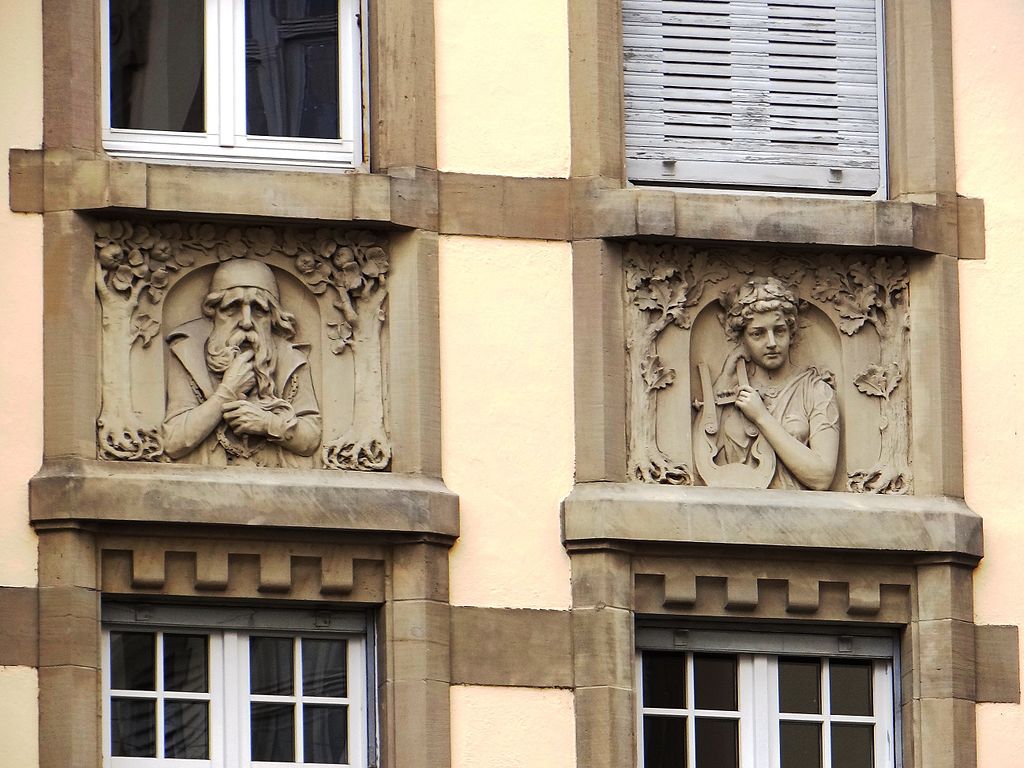#7324. Historical Façade with Allegorical Bas-Reliefs: A Dialogue of Eras in Stone
The photograph depicts a fragment of a historical building façade, executed in an eclectic style with neo-Renaissance elements. Particular attention is drawn to two decorative reliefs positioned between windows. These are masterfully crafted bas-reliefs with allegorical figures, framed by elegant floral motifs.
The left relief portrays a bearded male figure wearing a head covering, reminiscent of an ancient sage or philosopher. The right relief presents a youthful figure with a wreath, possibly personifying art or a muse. Both reliefs are set within shallow niches with ornamental framing.
The building's façade is characterized by light yellow plaster with contrasting sandy-colored stone elements. The architectural solution includes clear horizontal articulation, emphasized by stone lintels and cornices. Rectangular windows with traditional muntins complement the classical composition of the façade.
This architectural element is a striking example of the meticulous attention to detail and artistic expressiveness typical of historical urban buildings from the late 19th to early 20th century. The sculptural elements not only adorn the building but also bestow cultural and symbolic significance upon it.
